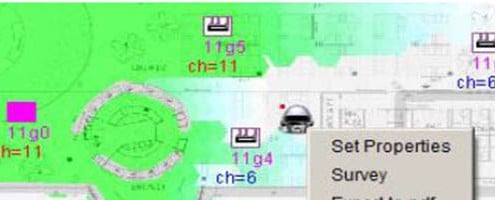Case Study for Intermittent Failure of Airport Wi-Fi Network
A case study illustrates how WiTuners helped a major airport discovering the underlying causes of a mysterious performance issue with WiTuners unique capabilities of discovering in-depth details of Wi-Fi networks and performing what-if analysis
Charting the Problem In Airport Lounge WiFi Network
The airport lounge concerned is typical of many such lounges throughout the world: a single entry point connects to two wings that are a little offset from each other. The space is generally open; seating arrangements and refreshment desks and booths complete the general description. The lounge can accommodate hundreds of travelers and it tends to be very busy before the departure of the main flights. People throng into the lounge in droves.
Many of the travelers using the lounge carry smartphones in addition to the usual notebooks and, more recently, tablets. Being used to “always on” connectivity, many smartphone users have their phones set to acquire any Wi-Fi network. Given the number of access points covering the lounge there was no reason to assume that the access points were the cause of the observed congestion.
Snooping the air traffic turned out not work. All APs were known and operated normally up to the point of congestion. There were Bluetooth devices present but their activity was not correlated to the congestion events. All the while, unexplained broadband interference that waxed and waned with the network load but it never disappeared completely. Further, the spectrum survey showed that channel occupancy also peaked during congestion but the number of actual connections did not.
Clearly the conventional “clean air” approaches to analyze this problem failed and a different approach proved necessary.









Leave a Reply
Want to join the discussion?Feel free to contribute!